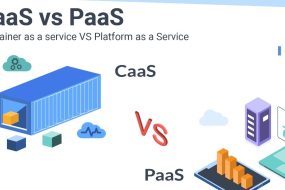
Virtual Private Cloud (VPC) Hosting has evolved significantly in recent years, and the security of these cloud environments has become paramount in the post-2021 world. As organizations increasingly rely on cloud-based infrastructure to run their applications and store sensitive data, the need for a robust and cutting-edge VPC security strategy has never been more critical. In this in-depth guide, we will delve into the intricacies of VPC security, explore the latest trends, and provide you with the knowledge and tools to fortify your cloud infrastructure.
Understanding VPC Security
What Is a VPC?
A Virtual Private Cloud (VPC) is a virtual network dedicated to your AWS account. It provides an isolated environment for your resources where you can launch your instances, databases, and other cloud services. Think of it as your private piece of the cloud.
Why VPC Security Matters
VPC security ensures the confidentiality, integrity, and availability of your cloud resources. It’s your invisible shield that protects your digital assets from cyber threats and unauthorized access. In a world where data breaches are a constant threat, having a solid VPC security strategy is non-negotiable.
Key Components of VPC Security
Security Groups
Security groups act as virtual firewalls for your instances. They control inbound and outbound traffic to and from your instances. By configuring security groups, you can dictate who can access your resources.
Network Access Control Lists (NACLs)
NACLs are an additional layer of security that acts as a firewall at the subnet level. They allow you to control traffic at the network level to protect your VPC resources.
VPC Flow Logs
VPC Flow Logs provide a way to capture information about the IP traffic going to and from network interfaces in your VPC. They are essential for monitoring, troubleshooting, and enhancing security.
Advanced VPC Security Practices
Bastion Hosts
Bastion hosts serve as a gateway for SSH or RDP access to your private instances. They add an extra layer of security by limiting direct access to your critical servers.
VPC Peering
VPC peering allows you to connect one VPC with another, enabling secure communication between them. It’s a valuable tool for multi-region or multi-account architectures.
Emerging Trends in VPC Security
Zero Trust Architecture
Zero Trust is a security model that treats every request as untrusted, regardless of its source. This approach minimizes the risk of breaches and lateral movement within the network.
Serverless Security
As serverless computing gains traction, new security challenges emerge. Understanding how to secure serverless applications within your VPC is crucial.
Final words
In today’s digital landscape, the security of your VPC is not an option—it’s a necessity. By implementing a comprehensive VPC security strategy and staying up to date with the latest trends, you can build a robust invisible shield to protect your cloud infrastructure. Remember, security is an ongoing process, and the best defense is a well-informed one.
Commonly Asked Questions
Q1: What are the potential risks of not securing my VPC adequately?
Inadequate VPC security can lead to data breaches, unauthorized access, and service disruptions, resulting in financial losses and damage to your reputation.
Q2: How can I stay updated on the latest VPC security trends?
To stay informed, regularly review AWS security documentation, follow security blogs, and consider AWS certifications to deepen your knowledge.
Q3: What is the role of encryption in VPC security?
Encryption plays a vital role in safeguarding data in transit and at rest within your VPC. It adds an extra layer of protection against data breaches.
Q4: Can I enhance VPC security without impacting performance?
Yes, optimizing security rules, regularly monitoring your VPC, and implementing security best practices can improve security without sacrificing performance.
Q5: Is VPC security a one-time setup, or do I need to regularly update it?
VPC security is an ongoing process. Regular updates, security assessments, and adapting to evolving threats are essential to maintain a secure VPC.
Advertisement







